Blog
What Is An Alkaline Diet?

An alkaline diet highlights alkaline foods such as vegetables and particular whole grains, all of which are low in caloric density. A healthy alkaline diet involves the perfect balance between alkalizing foods and acidifying foods.
The human body includes some organ systems which are adept at eliminating and neutralizing excess acids in the body, but there is a boundary as to how much acid a healthy body can effectively manage. The body is perfectly capable of sustaining an acid-alkaline balance only if the organs are working properly and a well-balanced alkaline diet is being eaten, along with a complete avoidance of other acid-producing elements such as tobacco use.
The alkaline diet may also be referred to as the alkaline ash diet or acid-alkaline diet. It is based on the idea that the foods you eat may alter the alkalinity or acidity (the pH value) of the body.
If you metabolize foods and remove the energy or calories from them, you are really burning the foods, except it occurs in a slow and well-controlled fashion. When you burn foods, they typically leave an ash residue, such as when you burn wood in any furnace. As it turns out, the ash may be acidic or alkaline or even neutral, and exponents of this diet believe that the ash can directly impact the acidity of the body.
This means that if you consume foods with the acidic ash, it makes the body acidic. Likewise, if you eat foods with the alkaline ash, it makes the body alkaline. Neutral ash, on the other hand, has no effect. Acid ash is believed to make the body vulnerable to numerous illness and disease, while alkaline ash is considered to be protective to the body. By eating more alkaline foods, you would be able to “alkalize” your food and also improve your health.
Food constituents which leave an acidic residue include phosphate, protein, and sulfur, while alkaline constituents include magnesium, calcium, and potassium. Some food groups are measured as acidic, alkaline or neutral as follows:
Acidic: Meat, fish, poultry, dairy, alcohol, eggs, and grains.
Neutral: Natural fats, sugars, and starches.
Alkaline: Fruits, legumes, nuts, and vegetables.
When discussing the alkaline diet, it is imperative to understand the connotation of the pH value. Simply put, the pH value is the measure of how alkaline or acidic something is. Typically, the pH value ranges from 0 to 14:
- 0-7 is acidic.
- 7 is neutral.
- 7-14 is alkaline
Many proponents of this diet suggest that individuals observe the pH value of their urine by using test strips, and making sure that it is alkaline; at least, ensuring the pH should be over 7 and not acidic, which is below 7.
However, it is essential to note that a pH value varies significantly within the body. Some parts may be acidic while others will be alkaline. There is no particular set level. The stomach is filled with hydrochloric acid, and this gives it a pH value of about 2 and 3.5, which is highly acidic. On the other hand, the blood is always somewhat alkaline, with a pH level between 7.35 and 7.45. The pH level of the blood falling out of this normal range is very severe, and can even be fatal if left untreated. This only occurs with certain diseases or conditions and has nothing to do with the diet you eat every day.









